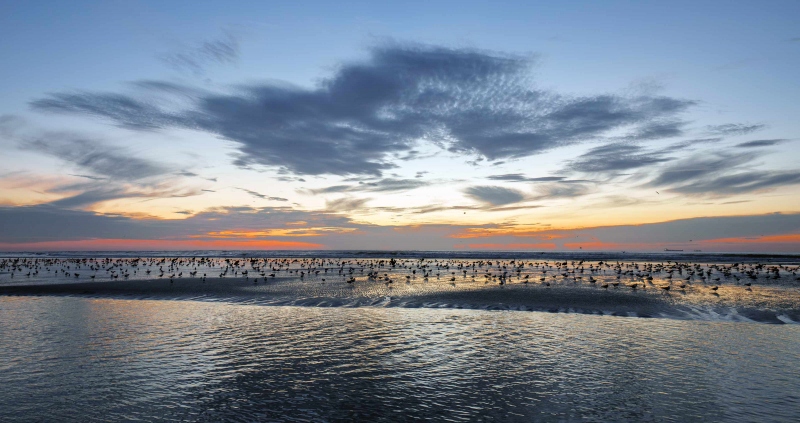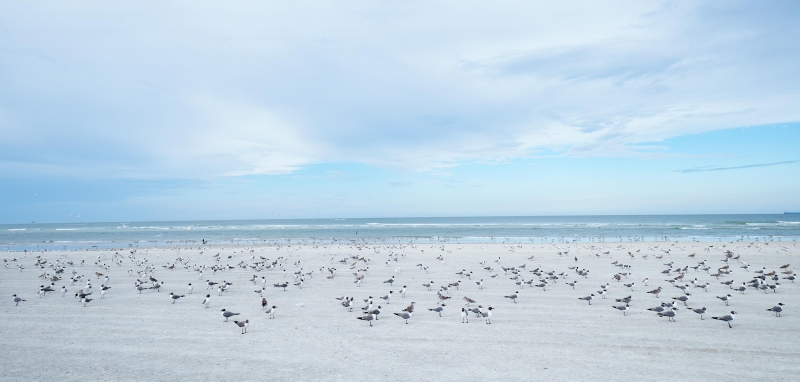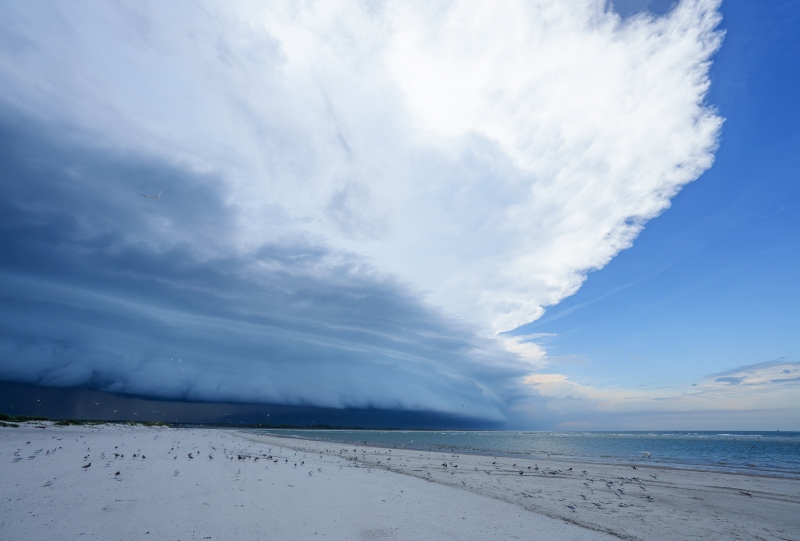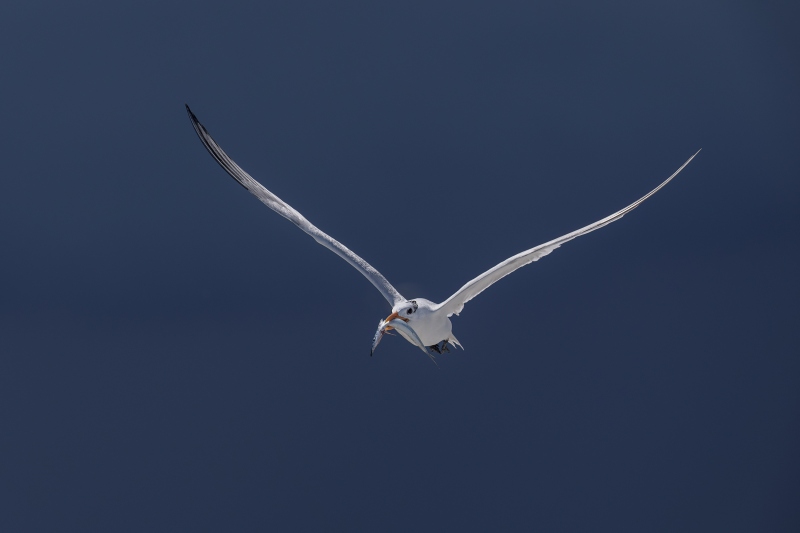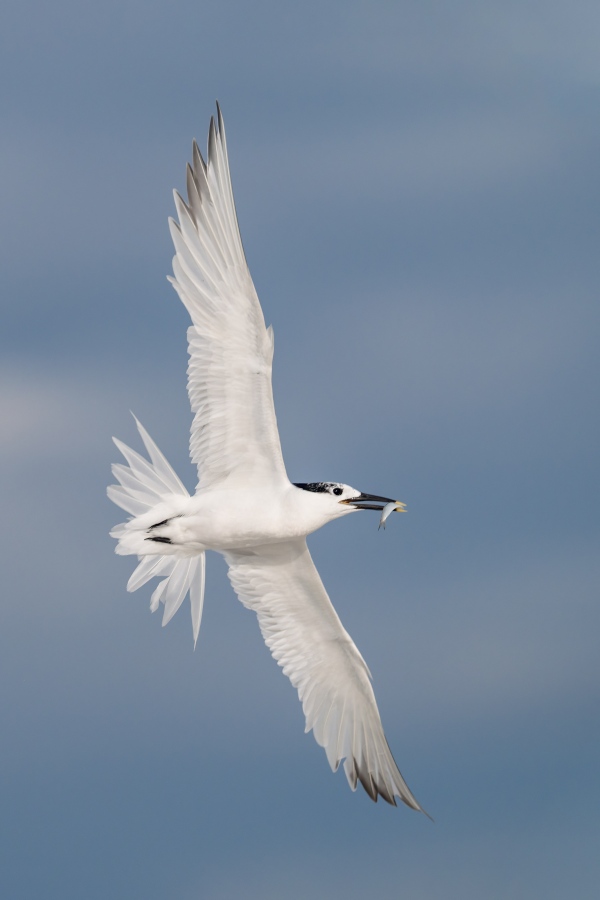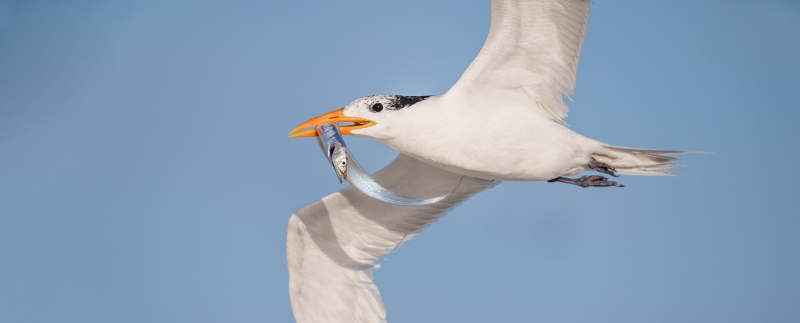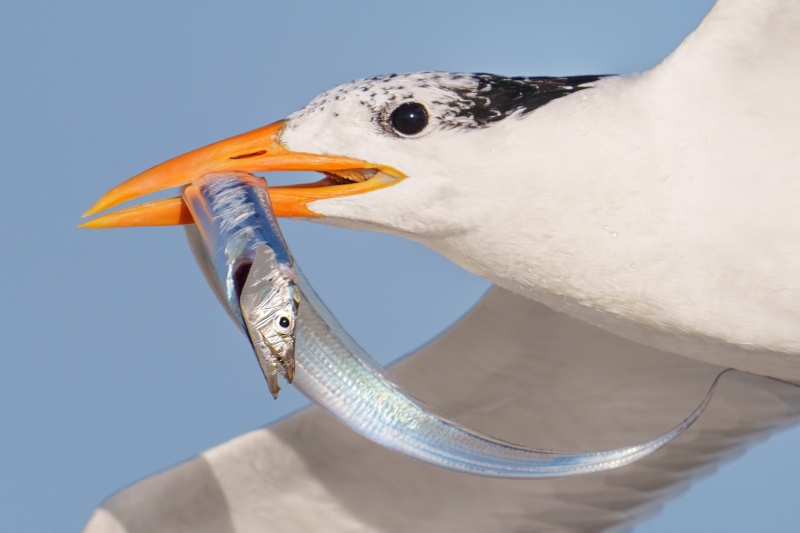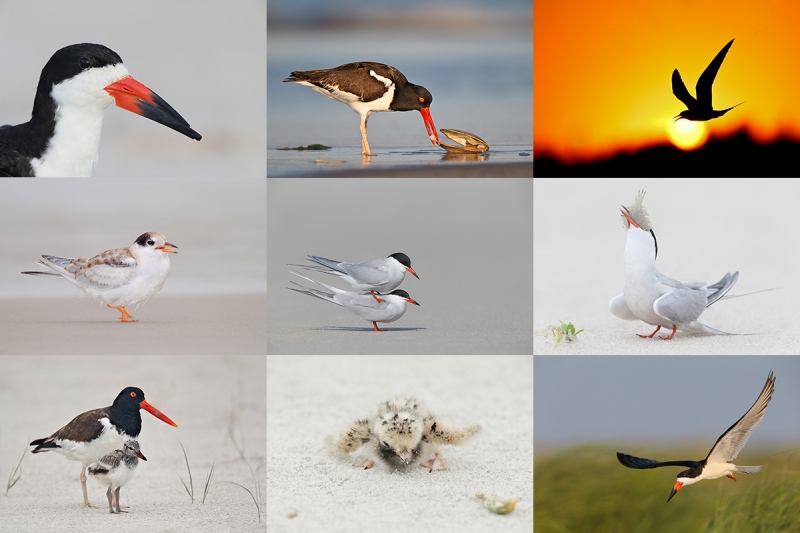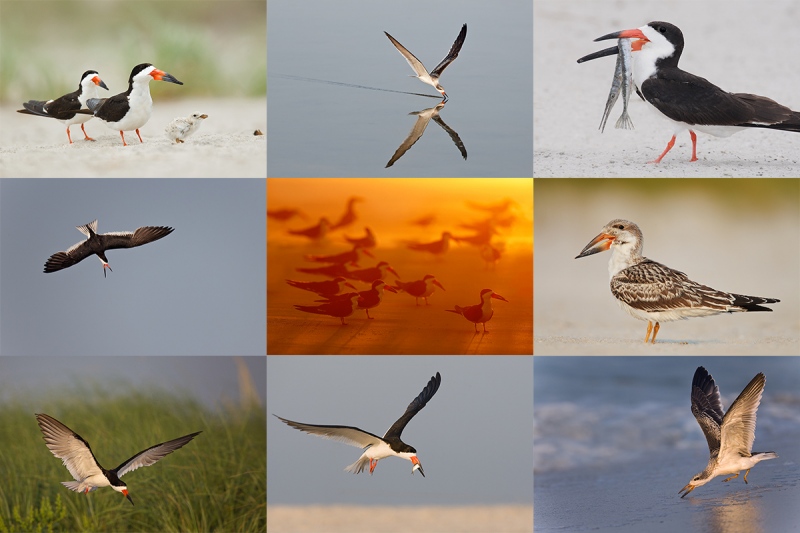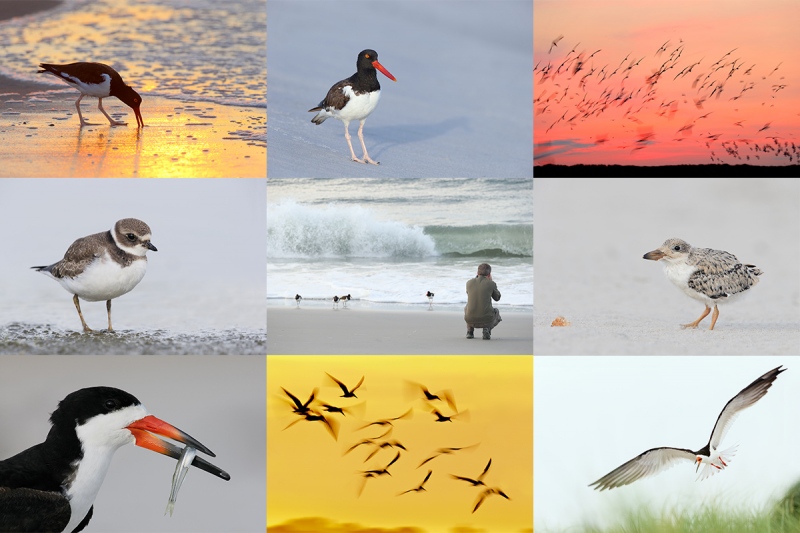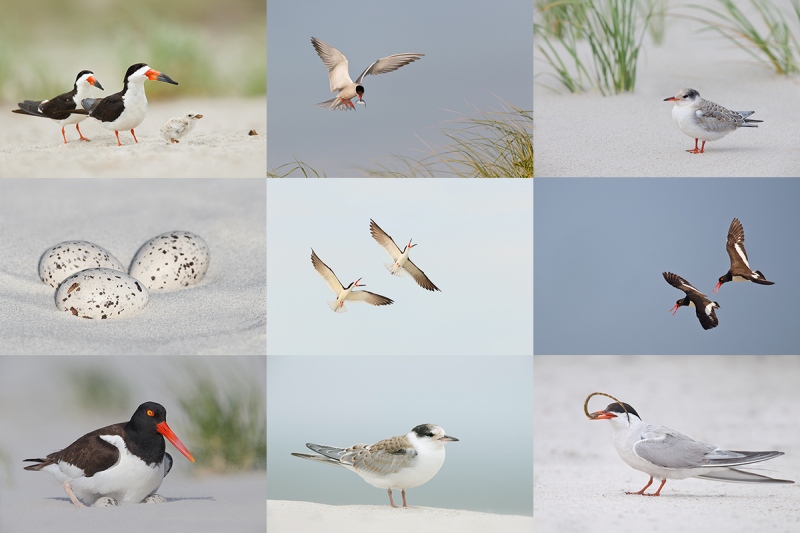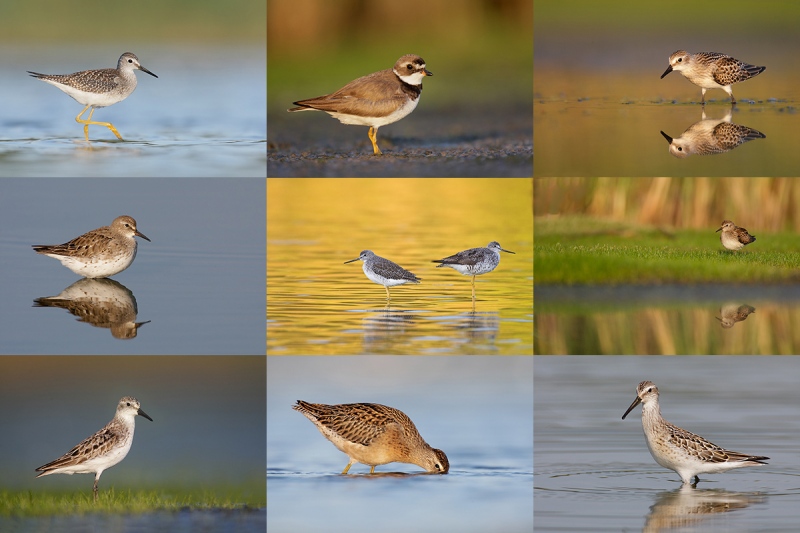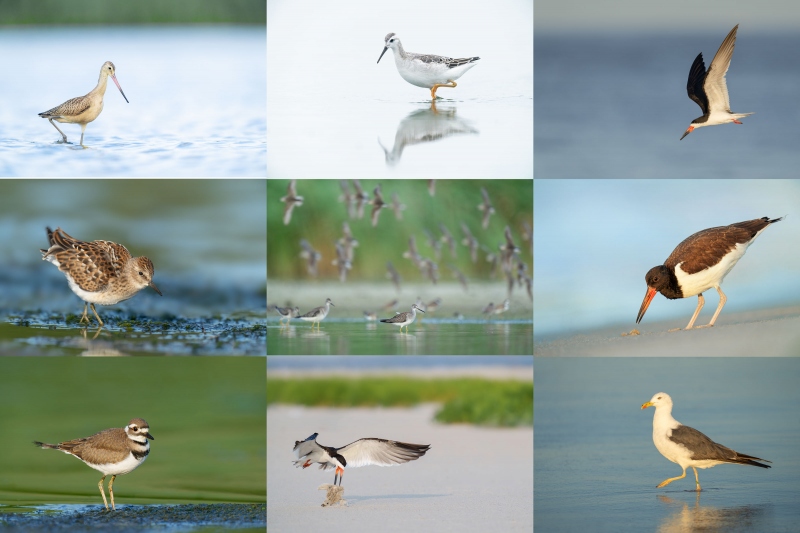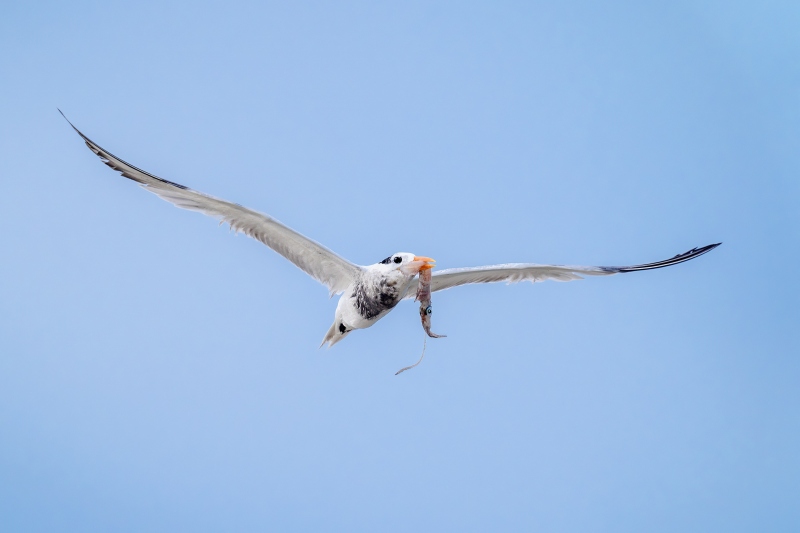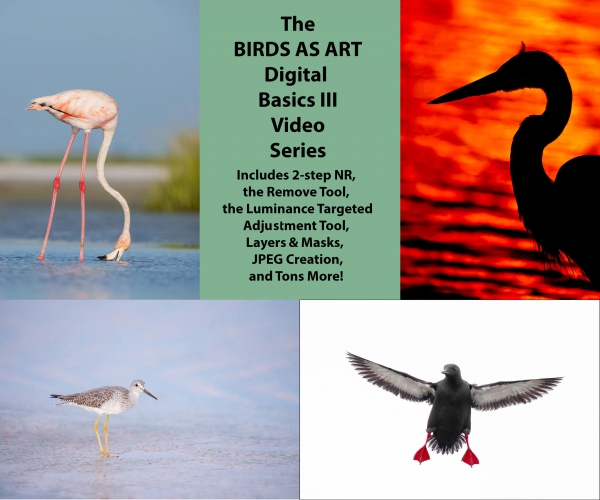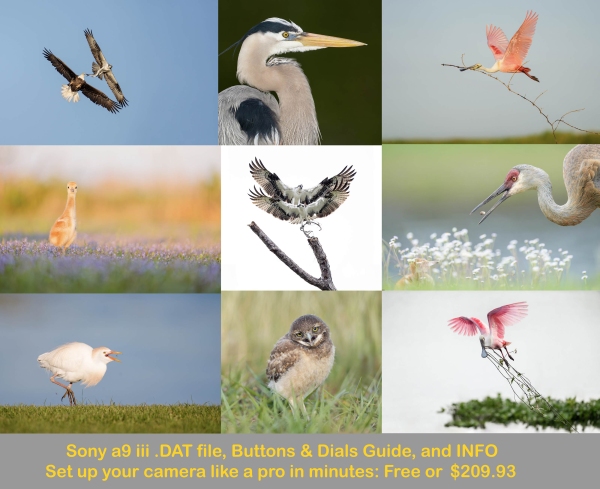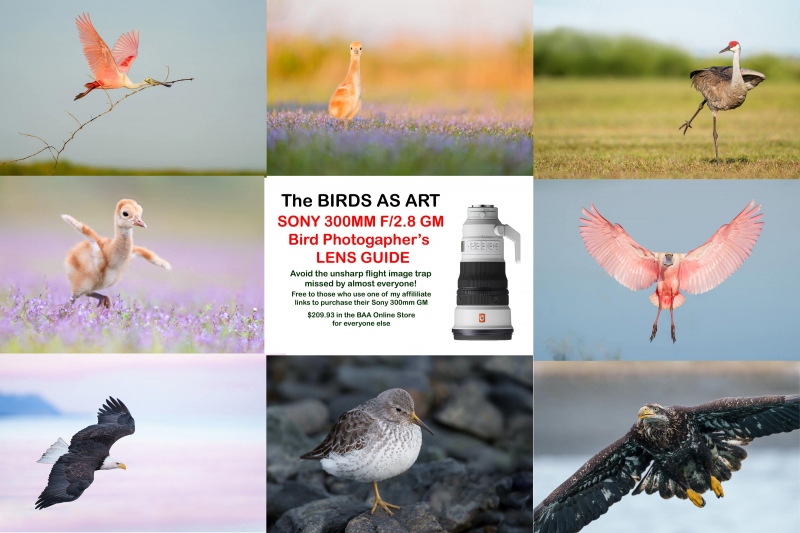July 23rd, 2024
|
|
Trinity Thomas — an amazing young woman
|
What’s Up?
On Monday evening, I am headed north on the Auto Train as I type. At dinner, I had a surprisingly excellent flatiron steak and had the absolute pleasure of meeting a young lady (champion) gymnast from The University of Florida named Trinity Thomas. She competed against and is friends with many of the young women going to Paris as members of the USA Olympic Team. As a 3x NCAA National Champion and a 5x US National Team Member, she is the real deal. Doubt me? Check her out on Instagram by searching for her gymtrin account. She even has her own Wikipedia page here! Trinity finished her collegiate career with a record-tying 28 perfect-10 scores and a record-breaking five Gym Slams (scores of perfect 10 on every apparatus)!
At the same dinner table, I met two young brothers from Virgina. The younger one, Luke De Gance (17 going on 18), is a talented hight school placekicker who aspires to kick for the Gators at Trinity’s alma mater, The University of Florida (where she recently earned her Masters Degree). She is looking forward to a career in nursing. The De Gance brothers were returning home after volunteering at a church summer camp in Florida. Luke’s older brother John-Paul is studying Sports management at Northern Virginia Community College. If you have lost faith in the youth of America, your spirits would have been uplifted had you been at dinner last night with the four of us.
Today is Tuesday 23 July. Once the Auto Train pulls into the Lorton, VA station, I will get into my vehicle for the 5-7 hour drive to my AirBnB in Lido Beach, less than ten minutes from Nickerson Beach. Whatever you do, I hope that you too have a great day.
There are usually not lots of opportunities to use wide angle zoom lenses for bird photography, but I had three good chances on the recently concluded Jax IPTs. If you have a favorite among today’s three featured images, please leave a comment and let us know why you made your choice. Which brings us to a great buy for Canon shooters.
Canon 16-35mm f/2.8L III USM Lens
Multiple IPT veteran Geri Georg is offering a rarely used Canon 16-35mm f/2.8L III USM lens in Excellent Plus to Near-mint condition for a ridiculously low $1099.00.
The sale includes the original box, the front and back lens caps, the lens pouch, the lens hood, and insured ground shipping via major courier to lower-48 US addresses only. Your item will not ship until your check clears unless other arrangements are made.
Please contact Geri via e-mail or by phone at (970) 219-4493 (MTD).
This lens is a scenic photographer’s dream come true. It sells new at B&H for $2199.00. Grabb Geri’s pretty much new lens and a handsome $1100.00 artie
Characterized by a revamped optical design, the EF 16-35mm f/2.8L III USM from Canon is a workhorse wide-angle zoom and member of the well-regarded L-series of lenses. Featuring a series of specialized elements, this lens utilizes a trio of aspherical elements and two ultra-low dispersion glass elements to control a variety of aberrations for high sharpness and clarity. Both SWC and ASC coatings have also been applied to the elements in order to reduce lens flare and ghosting for increased contrast and color accuracy.
Complementing its optical prowess, a ring-type Ultrasonic Motor offers fast, smooth, and near-silent autofocus performance, which is further benefitted by full-time manual focus operation and an internal focusing design. The lens is both water and dust-resistant, and fluorine coatings have also been applied to the front and rear elements to protect against fingerprints and smudges from affecting image quality. B&H and Canon
Canon EOS 5D Mark IV dSLR Camera Body
Multiple IPT veteran Geri Georg is offering a Canon EOS 5D Mark IV body in very good condition for an incredibly low $599.00. The sale includes the front body cap, the original and one extra Canon battery, the battery charger, a black LensCoat body bag, a near-mint Delkin Sensor Scope with the top and bottom caps and the case, and insured ground shipping via major courier to lower-48 US addresses only. Your item will not ship until your check clears unless other arrangements are made.
Please contact Geri via e-mail or by phone at (970) 219-4493 (MTD).
What can I say? The 5D IV was my favorite-ever Canon digital dSLR. I owned and used three of them while my 1DX II and a 1DX III sat on the shelf in my garage. A new 5D Mark IV, with its 30.4MP full-frame CMOS sensor, is still in productions and sells new for $$2,299 at B&H. If you have been dreaming of a 5D IV, grab this one save $1,250.00. artie
Supporting My Efforts Here
If you enjoy and learn from the blog, please consider using one of my affiliate links when purchasing new gear. It will never cost you a single penny. To support my effort here, please order from B&H by beginning your search here. Or, click here, to order from Bedfords and enter the discount code BIRDSASART at checkout to receive 3% cash back to your credit card and enjoy free Second-Day Air Fed-Ex shipping. It is always best to write for advice via e-mail.
In many cases, I can help you save some serious dollars. And/or prevent you from purchasing the wrong gear.
Summer On Long Island
Check out the July and August Nickerson Beach (& Jamaica Bay Wildlife Refuge/East Pond) IPT offerings here and consider joining us to learn a ton, make lots of great images, and improve your image processing skills.
Car Rental Warnings
All are advised to avoid renting a vehicle from either Fox or SIXT. I rented a car from Fox in San Diego (through Expedia) and when I went to pick up the car they would not allow me to rent the car without paying for their (always previously optional) over-priced insurance. They said it was state law. I have been renting a car in San Diego for more than fifty years and never once had been forced to purchase insurance. When I said that I would cancel my reservation and rent from National they said, “Fine, but you lose all your money. We do not allow cancellations.” All of the major NA rental outfits allow you to cancel anytime before pick-up without penalty. When I returned the vehicle two days early, they said, “We do not give refunds.” Another first.
In Denver, I rented from SIXT, big in Europe. The agent was kind and sweet and told me “No charge to upgrade to a BMW X-3 and no charge for a second driver.” I returned the SUV two days early expecting a refund as the guy in the lot had said. Instead, they ran my AMEX card for an additional $671.00 (for a variety of invented charges)! That after my discount for two days early return.
Forewarned is forearmed.
|
|
|
This image was created on 16 July 2024 at Huguenot Memorial Park on the second morning of the extended JAX IPT. Standing at full height, I used the hand held Sony FE 12-24mm f/2.8 GM lens (at 24 mm) and The One, the Sony a1 Mirrorless Camera.. ISO 1600. The exposure was determined by Zebras with ISO on the rear wheel: 1/125 second at f/2.8 (wide open) in Manual mode. RawDigger showed that the raw file brightness was dead solid perfect. AWB at 6:14:58am, 15 minutes before sunrise.
Lower center Tracking: Expand Spot/AF-C with Bird-Eye/Face Detection performed perfectly. Click on the image to enjoy the high-res version.
Image #1: Gulls, terns, and pelicans on the beach at low tide
|
Wide Angle Convenience
One of the beautiful things about Huguenot Memorial Park this season was that we rarely had to venture more than 100 yards from my parked SUV. Clouds in the east often scream out for a wide angle lens before sunrise. I would park the car in the perfect spot, shoot the sunrise, and then move the car up 100 yards or so to the protective ropes and park for the morning. This was much better than having to lug the 12-24 on the beach for a long photo session; it is a heavy lens. Geri’s used Canon 16-35mm III is a lot lighter! Grab it before it sells.
Pano Crops
Wide angle photos of groups of birds often do well after being cropped to panos. This puts more emphasis on the small-in-the-frame birds.
Bracketing Wide Angle Bird-scapes
When creating bird scapes with a wide angle lens, I always take the time to set 1/3-stop bracketing. I do this to ensure creating one dead-solid perfect exposure, not for the purpose of creating an HDR. (Note: to create a series of high dynamic range images it is always best to be on a tripod.)
|
|
|
This image was created on 17 July 2024 at Huguenot Memorial Park on the third afternoon of the extended JAX IPT. Standing at full height, I used the hand held Sony FE 12-24mm f/2.8 GM lens (at 24 mm) and The One, the Sony a1 Mirrorless Camera.. ISO 400. The exposure was determined by Zebras with ISO on the rear wheel: 1/800 second at f/4.5 (stopped down 1 1/3 stops) in Manual mode. RawDigger showed that the exposure was perfect. AWB at 6:11:51pm.
Lower center Tracking: Expand Spot/AF-C with Bird-Eye/Face Detection performed perfectly. Click on the image to enjoy the high-res version.
Image #2: Mostly Laughing Gulls on the beach at high tide
|
Blast-off Aftermath
On Wednesday afternoon past, we were on the beach at high tide when more than 20,000 gulls and terns blasted off at once and circled around for five minutes. It would have been great to have been right below them with a wide angle lens, but alas we were all shooting flight with medium telephotos at the time and the car was too far away. IAC, most of the gulls landed high up on the beach, so I grabbed the 12-24, zoomed in to 24mm, and went to work. I love the birds, the soft light, the sky color, and the clouds. WDYT?
|
|
|
This image was created on 18 July 2024 at Huguenot Memorial Park on the fourth afternoon of the extended JAX IPT. Standing at full height, I used the hand held Sony FE 12-24mm f/2.8 GM lens (at 12 mm) and The One, the Sony a1 Mirrorless Camera.. ISO 500. The exposure was determined by Zebras with ISO on the rear wheel: 1/800 second at f/8 (stopped down three stops) in Manual mode. RawDigger showed that the exposure was dead solid perfect. AWB at 4:35:35pm.
Lower center Tracking: Expand Spot/AF-C with Bird-Eye/Face Detection performed perfectly. Click on the image to enjoy the high-res version.
Image #3: Gulls, terns, and pelicans on the beach at low tide
|
The Black Cloud
If you look just above the horizon on the left side of the frame, you will see the indigo blue/black cloud that served as the background for the previously published image below. This image was made 20 minutes after the tern shot that; by that time, the black cloud had shrunk as the white storm cloud grew in size. The 12mm focal length turned out to be perfect for the shot I envisioned.
|
|
|
This image was created on 18 July 2024 at Huguenot Memorial Park on the fourth afternoon of the extended JAX IPT. Standing at full height, I used the hand held Sony FE 300mm f/2.8 GM OSS lens (Sony E) with the Sony FE 1.4x Teleconverter and the ridiculously amazing Sony a9 III Mirrorless Camera. The exposure was determined using Zebra technology with ISO on the Thumb Dial. ISO 500. 1/4000 second at f/5.6 (stopped down 1 full stop) in Manual Mode. AWB at 4:13:50pm on a bright sunny afternoon (just before a huge storm hit). RawDigger showed the raw file brightness to be dead solid perfect.
Zone AF-C AF with Bird Face/Eye Detection performed perfectly. Be sure to click on the image to enjoy a high-res version.
Image #4: Royal Tern in flight with fish for chick
|
Wind Against Bright Sun and Indigo Blue/Black Skies
With an ominously dark sky to the north and the wind from the southeast, things looked grim at best. But following the basic tenet, keep the wind at your back, I came up with a winning approach: shoot the birds flying south 3/4 backlit against the indigo blue/black skies. Again, Sony Zebras to the rescue; we set our exposures to show just a few Zebras on the whitest parts of the backlit birds — the top of their heads and the edges of the wings.
Typos
With all blog posts, feel free to e-mail or to leave a comment regarding any typos or errors.
July 21st, 2024 Your Call?
Which of today’s two featured images is the strongest? Why?
Canon Lays Off Beloved Camera Guru, Rudy Winston
From the PetaPixel article here. Thanks to blog regular David Policansky for sharing the link with me.
Last week, Canon USA initiated layoffs that affected multiple departments. While the exact number affected was not provided, it is not insignificant and included Rudy Winston, perhaps the most prominent face of Canon’s US-based brand, PetaPixel has learned.
(Rudy) Winston worked at Canon for nearly 30 years as part of its professional products team and during that time was responsible for training Canon’s staff on new products, creating presentations for customers and dealers, leading numerous writing projects, and providing technical assistance to professional and amateur photographers.
As frequent a face as he was for dealers and media — he was a constant presence at product demonstrations and press events — he is more known as one of the faces of Canon’s photography brand online thanks to his regular presence on Canon USA’s YouTube channel which includes an entire section titled “Tech Tips with Rudy Winston.”
“During his career at Canon, he’s had hands-on experience with nearly every Canon EOS camera and lens, and has outstanding working knowledge of everyday use of the EOS system,” Canon says of Winston in a bio on the company’s website. “Rudy has worked in the photography field virtually his entire adult life. Before coming to Canon, he had an extensive career as a freelance photographer, including years of experience shooting professional sports, as well as experience in retail camera sales.”
Everyone who commented was aghast at the news. I wrote,
Hey Rudy, Sorry to hear this disheartening news. Know that you are loved and respected by the thousands and thousands of folks you have helped over the decades, including and especially me. As we both know, after 19 years as a Canon Explorer or Light, I was fired by our good friend Steve Inglima who was in turn fired soon after. Corporate stupidity is sometimes impossible to understand. Maybe they will give you a watch :-(.
I am hoping that this event turns out to be a blessing in disguise for you.
Over the decades, I called and e-mailed Rudy many dozens of times, more recently after the death of the late Chuck Westfall, another Canon tech-rep giant. Even after I switched to Nikon and then to Sony, Rudy was Johnny on the spot when it came to answering my requests for Canon help from folks who had e-mailed me. Rudy was able to answer my camera body questions in detail 100% of the time <em>without ever having to look at a manual. He truly was a friend and a saint and will never be replaced. This is a huge loss for Canon folks. Much love, artie
While doing some web-surfing research for this item, I remembered that Rudy was on site with me at Bosque Del Apache as we created a series of bird photography videos for Canon. I did a Google search for arthur morris bosque del apache Canon videos and wound up here. I found the four videos immediately. Following many of the links below the video brought back a flood of great memories of my time with Canon. And a few tears as well.
Here is an e-mail from Rudy dated 1/31/2018:
Hi Artie,
Certainly we’re saddened to see a master of the craft of bird photography move on to a different brand after such a long relationship, but we respect you and your decision, and we’re certainly here if and when we can assist you in the future. Personally, it’s always been my pleasure to work with you, and offer whatever assistance I could. You’re a gentleman, and I’m honored to be able to tell my colleagues and friends that you and I are on a first-name basis. I’m sure you’ll continue to get great pictures with your new gear, and I wish you total success with it. At the same time, I certainly hope our paths cross again in the future. Many thanks for the kind words in the blog post where you announced your decision. I appreciate all I’ve learned from you, and will always remember our interactions fondly. All the best, moving forward, and please stay in touch.
Best Regards,
Rudy Winston
Canon USA
If you enjoy a really good backstory (on my years with Canon), you can check out the post that Rudy mentioned here.
Two days ago I tried Rudy on his cell phone but it had been disconnected. It must have been supplied by Canon 🙁
What’s Up?
As I have not unpacked after returning from Jacksonville — I did do a small load of laundry — I am pretty much ready to get on the Auto Train late on Monday afternoon and am looking forward to the three IPTs at Nickerson Beach and my original soul place, the East Pond at Jamaica Bay Wildlife, Queens, NY. If you would like to join me, see the details here.
I was glad to learn that first-timer Judy Stepenaskie will be joining IPT veteran Monte Brown on the 1st Nickerson Beach IPT. And I was also glad to learn that Morro Bay IPT veteran Dane Johnson sold his Canon EOS 5D Mark III (converted to infrared) in near-mint conditions with the BG-E11 battery grip (in like-new condition) and a Canon EF 24-105mm f/4 L IS USM lens (also in near-mint condition) for a ridiculously low $799.00 (was $999.00) in mid-July 2024. Kudos to Dane for lowering the price on a difficult-to-sell item.
If you opt to purchase and of the Sony gear mentioned in this blog post, please use one of my affiliate links to earn a free guide or free entry into my Camera User’s Guide E-mail Groups.
Supporting My Efforts Here
If you enjoy and learn from the blog, please consider using one of my affiliate links when purchasing new gear. It will never cost you a single penny. To support my effort here, please order from B&H by beginning your search here. Or, click here, to order from Bedfords and enter the discount code BIRDSASART at checkout to receive 3% cash back to your credit card and enjoy free Second-Day Air Fed-Ex shipping. It is always best to write for advice via e-mail.
In many cases, I can help you save some serious dollars. And/or prevent you from purchasing the wrong gear.
Summer On Long Island
Check out the July and August Nickerson Beach (& Jamaica Bay Wildlife Refuge/East Pond) IPT offerings here and consider joining us to learn a ton, make lots of great images, and improve your image processing skills.
Price Drops
Canon EOS 5D Mark IV (with Battery Grip)
Price reduced $100.00 on 12 June 2024
Price reduced $50.00 on 20 July 2024
Homer IPT veteran Mark Harrington is offering a Canon EOS 5D Mark IV (57,314 shutter actuations) in excellent plus condition for $899.00 (was $1049.00). The sale includes the front cap, the original product box, the manual and software, the Canon BG-E20 battery grip (a $299.00 value), one battery, the battery charger, the cable, and insured ground shipping via major courier to lower-48 US addresses only. Your item will not ship until your check clears unless other arrangements are made.
Please contact Mark via e-mail at e-mail or by phone at 1-612-308-5776 MST.
What can I say? The 5D IV was my favorite-ever Canon digital dSLR. I owned and used three of them while my 1DX II and a 1DX III sat on the shelf in my garage. A new 5D Mark IV, with its 30.4MP full-frame CMOS sensor, is still in productions and sells new for $$2,299 at B&H. If you have been dreaming of a 5D IV, grab this one save $1,250.00. artie
Canon EOS 5D Mark IV
Price reduced $100.00 on 12 June 2024
Price reduced $50.00 on 20 July 2024
Homer IPT veteran Mark Harrington is offering a Canon EOS 5D Mark IV (30269 shutter actuations ) in excellent plus condition for $849.00 (was $999.00). The sale includes the front cap, the strap, one battery, the battery charger, the cable, the manual, the original box and insured ground shipping via major courier to lower-48 US addresses only. Your item will not ship until your check clears unless other arrangements are made.
Please contact Mark via e-mail at e-mail or by phone at 1-612-308-5776 MST.
What can I say? The 5D IV was my favorite-ever Canon digital dSLR. I owned and used three of them while my 1DX II and a 1DX III sat on the shelf in my garage. A new 5D Mark IV, with its 30.4MP full-frame CMOS sensor, is still in productions and sells new for $$2,299 at B&H. If you have been dreaming of a 5D IV, grab this one save $1,250.00. artie
|
|
|
This image was created on 18 July 2024 at Huguenot Memorial Park on the fourth afternoon of the extended JAX IPT. Standing at full height, I used the hand held Sony FE 300mm f/2.8 GM OSS lens (Sony E) with the Sony FE 1.4x Teleconverter and the ridiculously amazing Sony a9 III Mirrorless Camera. The exposure was determined using Zebra technology with ISO on the Thumb Dial. ISO 800. 1/4000 second at f/5.0 (stopped down 2/3-stop) in Manual Mode. AWB at 8:02:44am on a brightening morning. RawDigger showed the raw file brightness to be perfect.
Zone AF-C AF with Bird Face/Eye Detection performed perfectly. Be sure to click on the image to enjoy a high-res version.
Image #1: Sandwich Tern — adult beginning left turn
|
Soft-Light Banking Perfection?
On Thursday morning past, we had some decent sunrise color and then enjoyed mostly cloudy-bright conditions for the rest of the morning. Again, I went with my favorite new flight rig, the hand held 300mm f/2.8/1.4X TC/a9 iii combo. I chose 124 very good flight keepers from about 6,000 images. With the science-fiction like AF that I dreamed of for years now a reality, the standards for what makes a great image of a flying bird keep getting higher every day. The soft light perfectly illuminated the underwing detail of the tern’s fully spread wings and tail justan instant before the bird in Image #1 began to turn left and away from me. The a9 iii’s 120 fps is a huge plus when photographing flight and action.
Image #1 was cropped from a horizontal original with a bit of canvas added above and below.
Flight Pano Crop
With a south wind and clear blue skies, our last morning offered the best sunny flight photography of the entire extended IPT. As I had been using the tripod-mounted 840mm/a1 combo at sunrise, I stuck with it as the flight photography developed. Sandra Calderbank did well working off the tripod with her 600mm/a1 rig. Steve Shore hand held the same outfit for a while and then went to the tripod topped by a Levered-Clamp FlexShooter Pro. As he recently got back into bird photography, he was having trouble shooting flight on the tripod. He ran back to the car and grabbed the 300mm f/2.8/1.4X TC, slapped his a1 on it, and went to work. Shooting flight off a tripod is a skill that must be learned and practiced.
The a1/a9 iii Dilemma
Assuming that your camera body is set up properly and in the hands of someone with a modicum of skill, the a1 produces raw files with superb image quality (at a not shabby 30 fps). And the AF system ain’t bad either. The a9 iii files are about half the size, a9 iii AF is surer than a1 AF, and its 120 fps capture rate is unmatched and provides four times as many flight poses and wing positions as the a1. Which is best for photographing birds in flight? Whichever one you have in your hands.
Flight Photography Tip
If you are lucky enough to photograph at a tern colony and you see a bird coming in with a nice prey item, understand that they may have trouble finding their chick or chicks on the first pass. They will often fly a wide circle and return to try again. When the bird in Image #2 flew in, I called it out. When it did not recognize its chick, it flew out over the ocean. By following it in flight, I was able to shout out its return several times before it finally landed and unloaded a nice shiny breakfast.
Processing Tip
The Remove Tool did a wonderful job with the specular highlights on the fish. Learn how to use this great, relatively new Photoshop tool (and tons more) in the Digital Basics III Video Series. Volume II coming this September.
|
|
Image #1: Unsharpened 100% crop of the Royal Tern with Cutlassfish — flight pano crop image
|
a1 Image Quality and Crop-ability
Simply put, a1 image quality and the ability of sharp a-1 image files to stand up to huge crops cannot be matched by the a9 iii.
|
|
Join me to photograph Black Skimmers, Common Terns, American Oystercatchers, and more!
|
The Summer 2024 Nickerson Beach 3 1/2 day Terns, Skimmers, & Oystercatchers IPTs
Nickerson Beach IPT #1: July 29 – August 1, 2024. 3 1/2 days: Afternoon session on MON 29 July through the full day on THURS 1 August, 2024: $2099.00. Limit: 6. Openings: 5
Nickerson Beach IPT #2: August 5-8 2024. 3 1/2 days: Afternoon session on MON 5 August through the full day on THURS 8 August, 2024: $2099.00. Limit: 6. Openings: 5.
Join me at Nickerson Beach Park this summer to photograph Black Skimmers, Common Terns, and American Oystercatchers. The trip is timed so that we should get to photograph tiny chicks as well as fledglings. There will be lots of flight photography including adults flying with baitfish and mole crabs. Creating great images of the chicks being fed is a challenge but I will do my best to help you toward that end. We will get to photograph a variety of breeding behaviors including courtship, sitting on (incubating) eggs, chick feeding, and more. We may get to photograph pre-dawn and early evening blastoffs. There is generally great afternoon skimmer flight photography that includes frequent midair battles sunny days. And with luck, we might even see a few tiny chicks in addition to fledged and flying young. We will also get to photograph the life cycle of American Oystercatcher. This will likely include nests with eggs and small chicks, young being fed, and surely a few fledglings.
Nesting Piping Plover is also possibly. There will be lots of gulls to photograph; most years I am able to find a few lesser black-backeds of varying ages in addition to the Herring, Ring-billed, and Great Black-backed Gulls. You will learn to identify and age the various gull species. There will likely be some Willets feeding along the surf and with luck we might get to photograph a handsome juvenile or two. In addition to the locally breeding shorebirds, we will likely get to see some southbound migrant arctic-and sub-arctic breeding shorebird species such as Sanderling, Semipalmated Plover, and maybe even Red Knot.
|
|
Clockwise from upper left around and back to center: Black Skimmer pair with chick; Black Skimmer fledgling skimming; Black Skimmer with large needlefish; Black Skimmer large chick; Black Skimmer fledgling taking flight; Black Skimmer adult with killifish; Black Skimmer adult landing near nest; Black Skimmer in midair chase; and Black Skimmers at dawn in the red light district.
|
Activities
Morning sessions will run from pre-dawn till about 9:00 or 9:30am, roughly 3 1/2 hours. Afternoon sessions will run from 5:30 till sunset (assuming that entry policies are as they were in 2023.
Many folks head home feeling that while our time in the field was fabulous and productive, that the working brunch sessions were even more valuable. During image review you will learn to select the best images from several thousand made with your 20- and 30 fps (or 120 fps!) camera bodies. And we will process a few images and distribute the screen capture videos for you to learn from after the trip. And all IPTs offer follow-up image critiques.
Change your life: sign up for this IPT today. Please shoot me an e-mail if you would like to explore the possibility of renting some Sony gear (including an a1) from me.
|
|
Clockwise from upper left around and back to center: Adult American Oystercatcher foraging at sunrise; Adult American Oystercatcher posing on clean sand; predawn skimmer flock blur; Black Skimmer large chick; Black Skimmer landing at nest on cloudy day; Black Skimmer large chick; Black Skimmer sunrise group blur; Black Skimmer adult with Atlantic Silversides; juvenile Semipalmated Plover, and photographer with oystercatcher family.
|
Some of What You Will Learn on a Nickerson Beach IPT
- 1- The basics and fine points of digital exposure; how to get the right exposure every time after making a single test exposure (or before if you are using SONY gear).
- 2- How and why to work in Manual mode (even if you’re scared of it).
- 3- How to approach free and wild birds without disturbing them.
- 4- Lots about bird behavior and how to use that knowledge to help you create better images.
- 6- To spot the good and great situations and to choose the best perspective.
- 7- To see, evaluate, and understand the light.
- 8- To design pleasing images by mastering your camera’s AF system.
- 9- And perhaps most importantly, to evaluate wind and sky conditions and understand how they affect bird photography. You will learn where and when to be (and why).
- 10- More than you could ever imagine.
|
|
Clockwise from upper left around and back to center: Black Skimmer pair with chick; Common Tern landing at nest with small baitfish; large Common Tern chick on pristine beach; American Oystercatchers courtship flight; Common Tern with pipefish; Common Tern fledgling; American Oystercatcher on eggs in high wind; American Oystercatcher nest with three eggs; and Black Skimmer midair battle.
|
The Details
We will be on the beach very early to enjoy sunrise. The morning sessions will run about 3 1/2 hours. Afternoon sessions will begin at 5:30 and run till sunset. There is never a set schedule on an IPT — we adapt to the conditions. On cloudy mornings with the right wind, we may opt to photograph till 11:30am or so and skip the afternoon session. That especially when the afternoon weather is looking iffy.
There will be a Photoshop/Image Review session before and after brunch (included) each full day. That will be followed by Instructor Nap Time. Each of these IPTs will run with only a single registrant as I do not like disappointing anyone. The best airports are JFK or Islip (if you have lots of Southwest points). Once you register, you will receive an e-mail with lodging information. Do know that it is always best if IPT folks stay in the same general area (rather than at home or at a friend’s place a good distance away).
Folks attending this IPT will be out in the field ridiculously early and stay out late to take advantage of sunrise and sunset colors; this is pretty much a staple on almost all BIRDS AS ART Instructional Photo-Tours. Doing so will often present unique photographic opportunities, opportunities that will be missed by those who need their beauty rest and those who need to get home for a proper dinner. I really love it when I am leaving the beach at 9:00am on a sunny morning after a great session just as a carful or two of well-rested photographers are arriving … We may be getting our feet wet on occasion, especially in the mornings, but those who wish to keep their feet 100% dry can do so.
Your $699 deposit is due now. Credit cards are OK for that. You can register by calling Jim or Jennifer during weekday business hours at 863-692-0906 with a credit card in hand. Once you leave a deposit, you will receive an e-mail with your balance statement and instructions for sending your balance check. Those who wish to pay for the trip in one fell swoop via check may do so by making the check out to BIRDS AS ART and then mailing it to BIRDS AS ART, PO BOX 7245, Indian Lake Estates, FL 33855. You will receive a confirmation e-mail with detailed instructions, and clothing and gear advice right after you register. Please shoot me an e-mail if you plan to register or if you have any questions.
IPT veterans and couples or friends signing up together may e-mail for discount information.
|
|
Join me on the COMBO IPT this coming August to photograph adult and juvenile shorebirds at the East Pond at Jamaica Bay Wildlife Refuge, Queens, NY.
Clockwise starting from the upper left back to center: juvenile Lesser Yellowlegs; adult Semipalmated Plover; fresh juvenile Semipalmated Sandpiper; fresh juvenile Least Sandpiper; fresh juvenile Stilt Sandpiper; fresh juvenile Short-billed Dowitcher; worn, molting adult Semipalmated Sandpiper; worn, molting adult White-rumped Sandpiper; and juvenile (left) and worn, molting adult Greater Yellowlegs.
|
The Combo IPT — East Pond, JBWR/Nickerson Beach: August 17 – 20, 2024. SAT August 17 through the morning session on TUES 20 August 2024. 3 1/2 days: $2199.00. Limit: 6. Openings: 5.
Join me for four mornings at the famed East Pond, Jamaica Bay Wildlife Refuge, Queens, NY (conditions permitting) to photograph southbound migrant shorebirds and for three afternoons to photograph beach nesting birds. The window for photographing juvenile shorebirds in fresh plumage is very narrow and this trip will of course get you to the right spot at the exact right time. You will learn to identify and age the shorebirds and to photograph them (at ground level). I will gladly share everything that I have learned during the 46 years I have been visiting the pond. Heck, I started late. After too many years of mismanagement, the gate valve at the north end of the East Pond has finally been repaired properly; water levels should be perfect this summer. If it is not, we will spend our mornings at Nickerson.
Afternoons (and mornings as well) at Nickerson Beach Park are superb in mid-August for photographing Black Skimmers, Common Terns, and American Oystercatchers with young of all ages. There will be lots of fledged chicks by mid-August, lots of flight including adults flying with baitfish and mole crabs, and excellent chances to photograph both chick feeding and predation by gulls. The Great Black-backed Gulls see the young skimmers as potato chips. We should get to photograph the evening skimmer blastoffs. On hot sunny days, there is still great afternoon skimmer flight photography that includes frequent midair battles.
There will be lots of terns (mostly Common Terns) and gulls to photograph; most years I am able to find a few Lesser Black-backed Gulls of varying ages in addition to the Herring, Ring-billed, and Great Black-backed Gulls. You will learn to identify and age the various gull species. There will likely be some Willets feeding along the surf and with luck we might get to photograph a handsome juvenile or two. In addition to the locally breeding shorebirds, we will likely get to see some southbound migrant arctic-and sub-arctic breeding shorebird species such as Sanderling, Semipalmated Plover, Semipalmated Sandpiper, and maybe even Red Knot. And we might encounter large, swirling flocks of Sanderling in flight over the ocean.
|
|
Join me this August to photograph at the East Pond at JBWR in the mornings (conditions permitting) and at Nickerson Beach in the afternoons.
Clockwise starting from the upper left back to center: Marbled Godwit (likely in juvenal plumage); Wilson’s Phalarope in first winter plumage; Black Skimmer adult in flight over the Atlantic; juvenile American Oystercatcher foraging surf; adult Lesser Black-backed Gull; Black Skimmer attacking tiny chick; Killdeer in fresh juvenal plumage; Least Sandpiper in fresh juvenal plumage ruffling; and juvenile Lesser Yellowlegs and mixed shorebird flock.
|
Morning sessions at the East Pond will run from just before dawn till about 9:00 or 9:30am. If the afternoon weather forecast is looking ominous, we may decide to photograph until after 11:00am and cancel the afternoon session. Afternoon sessions at Nick will run from 5:30 till sunset (assuming that entry policies are as they were in 2023).
Many folks head home feeling that while our time in the field was fabulous and productive, that the working brunch sessions were even more valuable. During image review you will learn to select the best images from several thousand made with your 20- and 30 fps (or 120 fps!) camera bodies. In addition, we will process some participant images and distribute the screen-capture videos for you to learn from after the trip. All IPTs offer follow-up image critiques.
Change your life: sign up for this IPT today. Please shoot me an e-mail if you would like to explore the possibility of renting some Sony gear (including an a1) from me.
|
|
Clockwise from upper left around and back to center: Adult American Oystercatcher foraging at sunrise; Adult American Oystercatcher posing on clean sand; predawn skimmer flock blur; Black Skimmer large chick; Black Skimmer landing at nest on cloudy day; Black Skimmer large chick; Black Skimmer sunrise group blur; Black Skimmer adult with Atlantic Silversides; juvenile Semipalmated Plover, and photographer with oystercatcher family.
|
Some of What You Will Learn on the COMBO IPT
- 1- The basics and fine points of digital exposure; how to get the right exposure every time after making a single test exposure (or before you make even a single image if you are using SONY gear).
- 2-How to get low and super low
- 3- How and why to work in Manual mode (even if you’re scared of it).
- 4- How to approach free and wild birds without disturbing them.
- 5- Lots about bird behavior and how to use that knowledge to help you create better images.
- 6- To spot the good and great situations and to choose the best perspective.
- 7- To see, evaluate, and understand the light.
- 8- To design pleasing images by mastering your camera’s AF system.
- 9- And perhaps most importantly, to evaluate wind and sky conditions and understand how they affect bird photography. You will learn where and when to be (and why).
- 10- To identify and age a variety of shorebird, tern, and gull species.
- 11- More than you could ever imagine.
The Details
There will be a Photoshop/Image Review session during and after brunch (included) each full day. That will be followed by Instructor Nap Time. This IPT will run with only a single registrant as I do not like disappointing anyone. The best airports are JFK or Islip (if you have lots of Southwest points). Once you register, you will receive an e-mail with lodging information. Do know that it is always best if IPT folks stay in the same general area (rather than at home or at a friend’s place a good distance away).
Folks attending this IPT will be out in the field ridiculously early and stay out late to take advantage of sunrise and sunset colors; this is pretty much a staple on almost all BIRDS AS ART Instructional Photo-Tours. Doing so will often present unique photographic opportunities, opportunities that will be missed by those who need their beauty rest and those who need to get home for a proper dinner. I really love it when I am leaving the beach at 9:00am on a sunny morning after a great session just as a carful or two of well-rested photographers are arriving … We may be getting our feet wet on occasion, especially in the mornings, but those who wish to keep their feet 100% dry can do so.
Your $699 deposit is due now. Credit cards are OK for that. You can register by calling Jim or Jennifer during weekday business hours at 863-692-0906 with a credit card in hand. Once you leave a deposit, you will receive an e-mail with your balance statement and instructions for sending your balance check. Those who wish to pay for the trip in one fell swoop via check may do so by making the check out to BIRDS AS ART and then mailing it to BIRDS AS ART, PO BOX 7245, Indian Lake Estates, FL 33855. You will receive a confirmation e-mail with detailed instructions, and clothing and gear advice right after you register. Please shoot me an e-mail if you plan to register or if you have any questions.
IPT veterans and couples or friends signing up together may e-mail for discount information.
Typos
With all blog posts, feel free to e-mail or to leave a comment regarding any typos or errors.
July 19th, 2024 What’s Up?
It is 4:25am on Friday 19 July as I type. Today is get-away day. We will photograph till about 8:30am, head back to the AirBnB, clean up and pack up, and then get all of my stuff and Steve’s bags and cases into in my SUV. Then I drop Steve at JAX for his flights home to DFW.
Though we’ve had a breeze from the west every morning (the worst when combined with sun and clear skies) and a wind from the SE (bad) on clear afternoons — we only had two of those), the trip has been amazingly productive. Unbeknown to most avian shooters, Huguenot Memorial Park ranks right up there as a world class North American bird photography hotspot. My plan is to have a Site Guide available before next season.
Some clouds on three of the five mornings and pretty much all the afternoons have helped tremendously. On Wednesday afternoon, we had a nice breeze from the S/SW and cloudy skies, the best flight photography conditions of the trip; I created more than 14,000 images (including Image #1, below). Shooting flight for the last two days with the Sony FE 300mm f/2.8 GM OSS lens (Sony E) with the Sony FE 1.4x Teleconverter and the ridiculously amazing Sony a9 III Mirrorless Camera,, I’ve been creating between 5,000 and 8,000 images per session, always getting at least a few great ones.
The combo mentioned above has quickly become my all time favorite, go-to flight photography outfit. It is so light that most folks can hand hold it for hours. And when I wanted to work low, I got down on the beach and got within range of one or more of the incredibly beautiful Royal Tern chicks. 420mm is quite a handy focal length for bird photography. And as I have not once been tempted to slap on the 2X TC, working at f/4 allows for the use of lower ISOs in all situations. Not too mention that I recently made some a9 iii AF menu changes that have significantly improved a9 iii focusing accuracy. I will be sharing those new settings with the a9 iii group soon.
Working at 120 fps with .3 second Pre-capture gives me dozens of wing positions and flight poses to choose from with each fly-by. And as Steve and Sandra have seen, the great ones jump right off the monitor even when you are viewing the a9 iii images like a movie in Photo Mechanic.
My ride back to ILE from the airport will take me about four hours. I hope that you also have a great day.
Your Call?
Which of today’s two featured images is the strongest? Why?
Supporting My Efforts Here
If you enjoy and learn from the blog, please consider using one of my affiliate links when purchasing new gear. It will never cost you a single penny. To support my effort here, please order from B&H by beginning your search here. Or, click here, to order from Bedfords and enter the discount code BIRDSASART at checkout to receive 3% cash back to your credit card and enjoy free Second-Day Air Fed-Ex shipping. It is always best to write for advice via e-mail.
In many cases, I can help you save some serious dollars. And/or prevent you from purchasing the wrong gear.
Summer On Long Island
Check out the July and August Nickerson Beach (& Jamaica Bay Wildlife Refuge/East Pond) IPT offerings here and consider joining us to learn a ton, make lots of great images, and improve your image processing skills.
|
|
|
This image was created on 17 July 2024 at Huguenot Memorial Park on the third afternoon of the extended JAX IPT. Standing at full height, I used the hand held Sony FE 300mm f/2.8 GM OSS lens (Sony E) with the Sony FE 1.4x Teleconverter and the ridiculously amazing Sony a9 III Mirrorless Camera. The exposure was determined using Zebra technology with ISO on the Thumb Dial. ISO 1600. 1/4000 second at f/4 (wide-open) in Manual Mode. AWB at 5:29:04pm on a cloudy afternoon. RawDigger showed the raw file brightness to be perfect.
Zone AF-C AF with Bird Face/Eye Detection performed perfectly. Be sure to click on the image to enjoy a high-res version.
Image #1: Royal Tern in flight with squid for chick
|
White Sky Flight Photography
With white sky conditions (cloudy), you usually need to add two or more stops of light to the metered exposure to come up with a properly exposed raw file. Thus, those should look over-exposed and washed out at best. It takes two minutes in Photoshop to blue up the dingy skies a bit — warning, do NOT try to over do that, increase the contrast, and juice up the colors. It is almost hard to believe that the raw file for Image #1, above, was totally flat and boring.
Do know that Sony’s Zebra technology makes white sky photography child’s play — just dial up your ISO until you have some Zebras on either the white sky or the subject and you are good to go.
If you are not quite sure how to bring your cloudy day images to life, check out the two offerings immediately below.
|
|
The BIRDS AS ART Current Workflow e-Guide (Digital Basics II).
You can order your copy from the BAA Online Store here, by sending a PayPal for $40 here, or by calling Jim or Jennifer weekdays at 863-692-0906 with your credit card in hand. Be sure to specify Digital Basics II.
|
The BIRDS AS ART Current Workflow e-Guide (Digital Basics II)
The technique mentioned above (eyeball replacement) and tons more great Photoshop tips and techniques — along with my complete digital workflow, Digital Eye Doctor Techniques, and all my personalized Keyboard Shortcuts — are covered in detail in the BIRDS AS ART Current Workflow e-Guide (Digital Basics II), an instructional PDF that is sent via e-mail. Note: folks working on a PC and/or those who do not want to miss anything Photoshop may wish to purchase the original Digital Basics along with DB II while saving $15 by clicking here to buy the DB Bundle.
Please note: the Divide and Conquer technique was inadvertently omitted from DB II. It is detailed in a free excerpt in the blog post here.
Folks who learn well by following along rather than by reading can check out the complete collection of MP 4 Photoshop Tutorial Videos by clicking here. Note: most of the videos are now priced at an amazingly low $5.00 each.
You can learn how and why I converted all of my Canon digital RAW files in DPP 4 in the DPP 4 RAW Conversion Guide here. More recently, I became proficient at converting my Nikon RAW (NEF) files in Adobe Camera Raw. About three years ago I began converting my Nikon and Sony RAW files in Capture One and did that for two years. You can learn more about Capture One in the Capture One Pro 12 Simplified MP4 Video here. The next step would be to get a copy of Arash Hazeghi’s “The Nikon Photographers’ Guide to Phase One Capture One Pro e-Guide” in the blog post here. Today, I convert my Sony raw files in Photoshop with Adobe Camera Raw.
You can learn advanced Quick Masking and advanced Layer Masking techniques in APTATS I & II. You can save $15 by purchasing the pair.
|
|
The Digital Basics III Video Series
|
The Digital Basics III Video Series
I realized about a year ago that my digital workflow had changed fairly significantly and was toying with the idea of writing a Digital Basics III. More recently, I have learned and begun working with two great new Photoshop Tools, the Remove Tool and the Luminance Targeted Adjustment Tool. The former is like a smarter Spot Healing Brush Tool on steroids and the latter is a huge step up from the fabulous Color Mixer Tool. During that same time frame, I came up with a new and improved 2-step noise reduction technique. I still use Divide and Conquer, Quick Masks, Layer Masks, an expanded array of personalized keyboard shortcuts, and tons of other stuff from both versions of Digital Basics.
As soon as I realized that I did not want to take on another large writing project, I realized that by creating a series of videos I could much more easily share all the details of my current digital workflow and much more easily incorporate additional new tips, techniques, and tools as I went. And so, The Digital Basics III Video Series was born. You can check out Volume I/#1 here.
You might opt to purchase single videos or to subscribe to Volume I and save $26 by ordering the first five videos in one fell swoop. You can purchase the five videos in Volume I by clicking here. The videos will be most valuable for folks using the latest version of Photoshop (2024) or Lightroom along with Topaz DeNoise AI and Topaz Sharpen AI.
|
|
|
This image was created on 18 July 2024 at Huguenot Memorial Park on the fourth afternoon of the extended JAX IPT. Standing at full height, I used the hand held Sony FE 300mm f/2.8 GM OSS lens (Sony E) with the Sony FE 1.4x Teleconverter and the ridiculously amazing Sony a9 III Mirrorless Camera. The exposure was determined using Zebra technology with ISO on the Thumb Dial. ISO 500. 1/4000 second at f/5.6 (stopped down 1 full stop) in Manual Mode. AWB at 4:13:50pm on a bright sunny afternoon (just before a huge storm hit). RawDigger showed the raw file brightness to be dead solid perfect.
Zone AF-C AF with Bird Face/Eye Detection performed perfectly. Be sure to click on the image to enjoy a high-res version.
Image #2: Royal Tern in flight with fish for chick
|
Wind Against Bright Sun and Indigo Blue/Black Skies
With an ominously dark sky to the north and the wind from the southeast, things looked grim at best. But following the basic tenet, keep the wind at your back, I came up with a winning approach: shoot the birds flying south 3/4 backlit against the indigo blue/black skies. Again, Sony Zebras to the rescue; we set our exposures to show just a few Zebras on the whitest parts of the backlit birds — the top of their heads and the edges of the wings.
a9 iii E-mail Set-up and Info Guide
|
a9 iii E-mail Set-up and Info Guide
For those who think that my comments on the a9 iii are pure hype, know that I recently sold the second of my three a1 bodies.
If you plan on purchasing a Sony a9 III Mirrorless Camera (or anything else for that matter), please remember to use or write for either my Bedfords discount code or my B&H affiliate link. Folks who use one of my two affiliate links to purchase the a9 III will receive my .DAT settings (the complete camera set-up), a Buttons and Dials Guide, and an a9 iii Info Sheet.
|
|
|
For those who did not use my link to purchase their Sony 300mm f/2.8 GM lens, you can order your a copy here for $209.93.
Click on the image to enlarge and to be able to read the fine print.
|
The BAA Sony 300mm f/2.8 Lens Guide
Impressed by my (or Pat’s) Sony FE 300mm f/2.8 GM OSS Lens (Sony E) images? Use either my Bedfords or B&H affiliate link to purchase your Sony 300mm f/2.8 GM lens and shoot me your receipt via e-mail and request a copy of the first-ever BAA Lens Guide. I thought that it would take only minutes to create this guide, but I was dead wrong. In the process of creating it, I learned a ton about the lens. And even better, I discovered a simple yet potentially fatal flaw that was resulting in sporadically unsharp flight images. The set-up fix is simple. Just be sure to use one of my affiliate links and get the guide for free.
If not, you can purchase a copy here for $209.93. Yes, it never hurts to use my links and it never costs you one penny more. And if you contact me via e-mail before you make a major purchase, I can often save you some money.
|
|
Join me to photograph Black Skimmers, Common Terns, American Oystercatchers, and more!
|
The Summer 2024 Nickerson Beach 3 1/2 day Terns, Skimmers, & Oystercatchers IPTs
Nickerson Beach IPT #1: July 29 – August 1, 2024. 3 1/2 days: Afternoon session on MON 29 July through the full day on THURS 1 August, 2024: $2099.00. Limit: 6. Openings: 5
Nickerson Beach IPT #2: August 5-8 2024. 3 1/2 days: Afternoon session on MON 5 August through the full day on THURS 8 August, 2024: $2099.00. Limit: 6. Openings: 5.
Join me at Nickerson Beach Park this summer to photograph Black Skimmers, Common Terns, and American Oystercatchers. The trip is timed so that we should get to photograph tiny chicks as well as fledglings. There will be lots of flight photography including adults flying with baitfish and mole crabs. Creating great images of the chicks being fed is a challenge but I will do my best to help you toward that end. We will get to photograph a variety of breeding behaviors including courtship, sitting on (incubating) eggs, chick feeding, and more. We may get to photograph pre-dawn and early evening blastoffs. There is generally great afternoon skimmer flight photography that includes frequent midair battles sunny days. And with luck, we might even see a few tiny chicks in addition to fledged and flying young. We will also get to photograph the life cycle of American Oystercatcher. This will likely include nests with eggs and small chicks, young being fed, and surely a few fledglings.
Nesting Piping Plover is also possibly. There will be lots of gulls to photograph; most years I am able to find a few lesser black-backeds of varying ages in addition to the Herring, Ring-billed, and Great Black-backed Gulls. You will learn to identify and age the various gull species. There will likely be some Willets feeding along the surf and with luck we might get to photograph a handsome juvenile or two. In addition to the locally breeding shorebirds, we will likely get to see some southbound migrant arctic-and sub-arctic breeding shorebird species such as Sanderling, Semipalmated Plover, and maybe even Red Knot.
|
|
Clockwise from upper left around and back to center: Black Skimmer pair with chick; Black Skimmer fledgling skimming; Black Skimmer with large needlefish; Black Skimmer large chick; Black Skimmer fledgling taking flight; Black Skimmer adult with killifish; Black Skimmer adult landing near nest; Black Skimmer in midair chase; and Black Skimmers at dawn in the red light district.
|
Activities
Morning sessions will run from pre-dawn till about 9:00 or 9:30am, roughly 3 1/2 hours. Afternoon sessions will run from 5:30 till sunset (assuming that entry policies are as they were in 2023.
Many folks head home feeling that while our time in the field was fabulous and productive, that the working brunch sessions were even more valuable. During image review you will learn to select the best images from several thousand made with your 20- and 30 fps (or 120 fps!) camera bodies. And we will process a few images and distribute the screen capture videos for you to learn from after the trip. And all IPTs offer follow-up image critiques.
Change your life: sign up for this IPT today. Please shoot me an e-mail if you would like to explore the possibility of renting some Sony gear (including an a1) from me.
|
|
Clockwise from upper left around and back to center: Adult American Oystercatcher foraging at sunrise; Adult American Oystercatcher posing on clean sand; predawn skimmer flock blur; Black Skimmer large chick; Black Skimmer landing at nest on cloudy day; Black Skimmer large chick; Black Skimmer sunrise group blur; Black Skimmer adult with Atlantic Silversides; juvenile Semipalmated Plover, and photographer with oystercatcher family.
|
Some of What You Will Learn on a Nickerson Beach IPT
- 1- The basics and fine points of digital exposure; how to get the right exposure every time after making a single test exposure (or before if you are using SONY gear).
- 2- How and why to work in Manual mode (even if you’re scared of it).
- 3- How to approach free and wild birds without disturbing them.
- 4- Lots about bird behavior and how to use that knowledge to help you create better images.
- 6- To spot the good and great situations and to choose the best perspective.
- 7- To see, evaluate, and understand the light.
- 8- To design pleasing images by mastering your camera’s AF system.
- 9- And perhaps most importantly, to evaluate wind and sky conditions and understand how they affect bird photography. You will learn where and when to be (and why).
- 10- More than you could ever imagine.
|
|
Clockwise from upper left around and back to center: Black Skimmer pair with chick; Common Tern landing at nest with small baitfish; large Common Tern chick on pristine beach; American Oystercatchers courtship flight; Common Tern with pipefish; Common Tern fledgling; American Oystercatcher on eggs in high wind; American Oystercatcher nest with three eggs; and Black Skimmer midair battle.
|
The Details
We will be on the beach very early to enjoy sunrise. The morning sessions will run about 3 1/2 hours. Afternoon sessions will begin at 5:30 and run till sunset. There is never a set schedule on an IPT — we adapt to the conditions. On cloudy mornings with the right wind, we may opt to photograph till 11:30am or so and skip the afternoon session. That especially when the afternoon weather is looking iffy.
There will be a Photoshop/Image Review session before and after brunch (included) each full day. That will be followed by Instructor Nap Time. Each of these IPTs will run with only a single registrant as I do not like disappointing anyone. The best airports are JFK or Islip (if you have lots of Southwest points). Once you register, you will receive an e-mail with lodging information. Do know that it is always best if IPT folks stay in the same general area (rather than at home or at a friend’s place a good distance away).
Folks attending this IPT will be out in the field ridiculously early and stay out late to take advantage of sunrise and sunset colors; this is pretty much a staple on almost all BIRDS AS ART Instructional Photo-Tours. Doing so will often present unique photographic opportunities, opportunities that will be missed by those who need their beauty rest and those who need to get home for a proper dinner. I really love it when I am leaving the beach at 9:00am on a sunny morning after a great session just as a carful or two of well-rested photographers are arriving … We may be getting our feet wet on occasion, especially in the mornings, but those who wish to keep their feet 100% dry can do so.
Your $699 deposit is due now. Credit cards are OK for that. You can register by calling Jim or Jennifer during weekday business hours at 863-692-0906 with a credit card in hand. Once you leave a deposit, you will receive an e-mail with your balance statement and instructions for sending your balance check. Those who wish to pay for the trip in one fell swoop via check may do so by making the check out to BIRDS AS ART and then mailing it to BIRDS AS ART, PO BOX 7245, Indian Lake Estates, FL 33855. You will receive a confirmation e-mail with detailed instructions, and clothing and gear advice right after you register. Please shoot me an e-mail if you plan to register or if you have any questions.
IPT veterans and couples or friends signing up together may e-mail for discount information.
|
|
Join me on the COMBO IPT this coming August to photograph adult and juvenile shorebirds at the East Pond at Jamaica Bay Wildlife Refuge, Queens, NY.
Clockwise starting from the upper left back to center: juvenile Lesser Yellowlegs; adult Semipalmated Plover; fresh juvenile Semipalmated Sandpiper; fresh juvenile Least Sandpiper; fresh juvenile Stilt Sandpiper; fresh juvenile Short-billed Dowitcher; worn, molting adult Semipalmated Sandpiper; worn, molting adult White-rumped Sandpiper; and juvenile (left) and worn, molting adult Greater Yellowlegs.
|
The Combo IPT — East Pond, JBWR/Nickerson Beach: August 17 – 20, 2024. SAT August 17 through the morning session on TUES 20 August 2024. 3 1/2 days: $2199.00. Limit: 6. Openings: 5.
Join me for four mornings at the famed East Pond, Jamaica Bay Wildlife Refuge, Queens, NY (conditions permitting) to photograph southbound migrant shorebirds and for three afternoons to photograph beach nesting birds. The window for photographing juvenile shorebirds in fresh plumage is very narrow and this trip will of course get you to the right spot at the exact right time. You will learn to identify and age the shorebirds and to photograph them (at ground level). I will gladly share everything that I have learned during the 46 years I have been visiting the pond. Heck, I started late. After too many years of mismanagement, the gate valve at the north end of the East Pond has finally been repaired properly; water levels should be perfect this summer. If it is not, we will spend our mornings at Nickerson.
Afternoons (and mornings as well) at Nickerson Beach Park are superb in mid-August for photographing Black Skimmers, Common Terns, and American Oystercatchers with young of all ages. There will be lots of fledged chicks by mid-August, lots of flight including adults flying with baitfish and mole crabs, and excellent chances to photograph both chick feeding and predation by gulls. The Great Black-backed Gulls see the young skimmers as potato chips. We should get to photograph the evening skimmer blastoffs. On hot sunny days, there is still great afternoon skimmer flight photography that includes frequent midair battles.
There will be lots of terns (mostly Common Terns) and gulls to photograph; most years I am able to find a few Lesser Black-backed Gulls of varying ages in addition to the Herring, Ring-billed, and Great Black-backed Gulls. You will learn to identify and age the various gull species. There will likely be some Willets feeding along the surf and with luck we might get to photograph a handsome juvenile or two. In addition to the locally breeding shorebirds, we will likely get to see some southbound migrant arctic-and sub-arctic breeding shorebird species such as Sanderling, Semipalmated Plover, Semipalmated Sandpiper, and maybe even Red Knot. And we might encounter large, swirling flocks of Sanderling in flight over the ocean.
|
|
Join me this August to photograph at the East Pond at JBWR in the mornings (conditions permitting) and at Nickerson Beach in the afternoons.
Clockwise starting from the upper left back to center: Marbled Godwit (likely in juvenal plumage); Wilson’s Phalarope in first winter plumage; Black Skimmer adult in flight over the Atlantic; juvenile American Oystercatcher foraging surf; adult Lesser Black-backed Gull; Black Skimmer attacking tiny chick; Killdeer in fresh juvenal plumage; Least Sandpiper in fresh juvenal plumage ruffling; and juvenile Lesser Yellowlegs and mixed shorebird flock.
|
Morning sessions at the East Pond will run from just before dawn till about 9:00 or 9:30am. If the afternoon weather forecast is looking ominous, we may decide to photograph until after 11:00am and cancel the afternoon session. Afternoon sessions at Nick will run from 5:30 till sunset (assuming that entry policies are as they were in 2023).
Many folks head home feeling that while our time in the field was fabulous and productive, that the working brunch sessions were even more valuable. During image review you will learn to select the best images from several thousand made with your 20- and 30 fps (or 120 fps!) camera bodies. In addition, we will process some participant images and distribute the screen-capture videos for you to learn from after the trip. All IPTs offer follow-up image critiques.
Change your life: sign up for this IPT today. Please shoot me an e-mail if you would like to explore the possibility of renting some Sony gear (including an a1) from me.
|
|
Clockwise from upper left around and back to center: Adult American Oystercatcher foraging at sunrise; Adult American Oystercatcher posing on clean sand; predawn skimmer flock blur; Black Skimmer large chick; Black Skimmer landing at nest on cloudy day; Black Skimmer large chick; Black Skimmer sunrise group blur; Black Skimmer adult with Atlantic Silversides; juvenile Semipalmated Plover, and photographer with oystercatcher family.
|
Some of What You Will Learn on the COMBO IPT
- 1- The basics and fine points of digital exposure; how to get the right exposure every time after making a single test exposure (or before you make even a single image if you are using SONY gear).
- 2-How to get low and super low
- 3- How and why to work in Manual mode (even if you’re scared of it).
- 4- How to approach free and wild birds without disturbing them.
- 5- Lots about bird behavior and how to use that knowledge to help you create better images.
- 6- To spot the good and great situations and to choose the best perspective.
- 7- To see, evaluate, and understand the light.
- 8- To design pleasing images by mastering your camera’s AF system.
- 9- And perhaps most importantly, to evaluate wind and sky conditions and understand how they affect bird photography. You will learn where and when to be (and why).
- 10- To identify and age a variety of shorebird, tern, and gull species.
- 11- More than you could ever imagine.
The Details
There will be a Photoshop/Image Review session during and after brunch (included) each full day. That will be followed by Instructor Nap Time. This IPT will run with only a single registrant as I do not like disappointing anyone. The best airports are JFK or Islip (if you have lots of Southwest points). Once you register, you will receive an e-mail with lodging information. Do know that it is always best if IPT folks stay in the same general area (rather than at home or at a friend’s place a good distance away).
Folks attending this IPT will be out in the field ridiculously early and stay out late to take advantage of sunrise and sunset colors; this is pretty much a staple on almost all BIRDS AS ART Instructional Photo-Tours. Doing so will often present unique photographic opportunities, opportunities that will be missed by those who need their beauty rest and those who need to get home for a proper dinner. I really love it when I am leaving the beach at 9:00am on a sunny morning after a great session just as a carful or two of well-rested photographers are arriving … We may be getting our feet wet on occasion, especially in the mornings, but those who wish to keep their feet 100% dry can do so.
Your $699 deposit is due now. Credit cards are OK for that. You can register by calling Jim or Jennifer during weekday business hours at 863-692-0906 with a credit card in hand. Once you leave a deposit, you will receive an e-mail with your balance statement and instructions for sending your balance check. Those who wish to pay for the trip in one fell swoop via check may do so by making the check out to BIRDS AS ART and then mailing it to BIRDS AS ART, PO BOX 7245, Indian Lake Estates, FL 33855. You will receive a confirmation e-mail with detailed instructions, and clothing and gear advice right after you register. Please shoot me an e-mail if you plan to register or if you have any questions.
IPT veterans and couples or friends signing up together may e-mail for discount information.
Typos
With all blog posts, feel free to e-mail or to leave a comment regarding any typos or errors.
|
|


